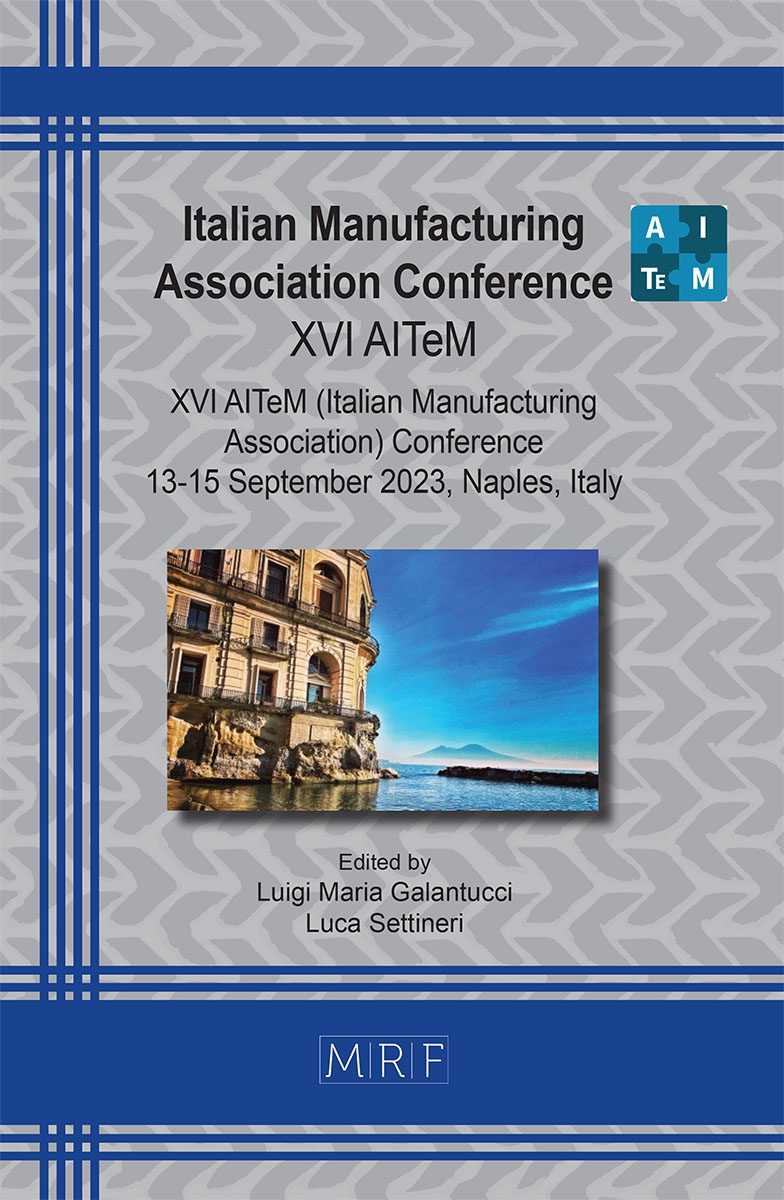Application of high voltage fragmentation to treat end-of-life wind blades
Marco Diani, Shravan Torvi, Marcello Colledani
download PDFAbstract. The use of composites is constantly increasing in several sectors, from wind energy to automotive, thanks to their mechanical properties, lightweight, and resistance to corrosion. Despite this, the recycling and reuse of these materials in high-added value applications is not yet performed at the industrial level. In particular, End-of-Life (EoL) products are sent to landfills (if possible), incinerated, or inserted in co-processing in cement plants. This work presents an experimental approach to treat End-of-Life wind blades based on High Voltage Fragmentation (HVF). This technology, based on the creation of electric spark channels, is able to generate localized shock waves at the interface between two different materials. The potential of its application has been shown in the literature, but an experimental campaign is needed to find the optimal parameters to obtain an output material with proper characteristics to feed specific output products, following a demand-driven approach.
Keywords
Circular Economy, Composite Recycling, Mechanical Separation
Published online 9/5/2023, 9 pages
Copyright © 2023 by the author(s)
Published under license by Materials Research Forum LLC., Millersville PA, USA
Citation: Marco Diani, Shravan Torvi, Marcello Colledani, Application of high voltage fragmentation to treat end-of-life wind blades, Materials Research Proceedings, Vol. 35, pp 266-274, 2023
DOI: https://doi.org/10.21741/9781644902714-32
The article was published as article 32 of the book Italian Manufacturing Association Conference
![]() Content from this work may be used under the terms of the Creative Commons Attribution 3.0 license. Any further distribution of this work must maintain attribution to the author(s) and the title of the work, journal citation and DOI.
Content from this work may be used under the terms of the Creative Commons Attribution 3.0 license. Any further distribution of this work must maintain attribution to the author(s) and the title of the work, journal citation and DOI.
References
[1] European Environment Agency, Share of energy consumption from renewable sources in Europe, www.eea.europa.eu/ims/share-of-energy-consumption-from, Last accessed 06/03/2023
[2] Komusanac, I.; Brindley, G.; Fraile, D.; Ramirez, L. Wind Energy in Europe-2021 Statistics and the Outlook for 2022-2026; WindEurope: Brussels, Belgium, 2022; p. 37.
[3] Directive (EU) 2018/2001 of the European Parliament and of the Council of 11 December 2018 on the promotion of the use of energy from renewable sources, https://eur-lex.europa.eu/legal-content/EN/TXT/?uri=uriserv:OJ.L_.2018.328.01.0082.01.ENG&toc=OJ:L:2018:328:TOC, Last accessed 06/06/2023
[4] Beauson, J., & Brøndsted, P. (2016). Wind turbine blades: an end of life perspective. MARE-WINT: New Materials and Reliability in Offshore Wind Turbine Technology, 421-432. https://doi.org/10.1007/978-3-319-39095-6_23
[5] Oliveux, G., Dandy, L. O., & Leeke, G. A. (2015). Current status of recycling of fibre reinforced polymers: Review of technologies, reuse and resulting properties. Prog. in mat. Sc., 72, 61-99. https://doi.org/10.1016/j.pmatsci.2015.01.004
[6] Diani, M., Picone, N., & Colledani, M. (2023). Smart Composite Mechanical Demanufacturing Processes. In Systemic Circular Economy Solutions for Fiber Reinforced Composites (pp. 61-80). Cham: Springer International Publishing. https://doi.org/10.1007/978-3-031-22352-5_4
[7] García-Arrieta, S., Sarlin, E., Calle, A. D. L., Dimiccoli, A., Saviano, L., & Elizetxea, C. (2023). Thermal Demanufacturing Processes for Long Fibers Recovery. In Systemic Circular Economy Solutions for Fiber Reinforced Composites (pp. 81-97). Cham: Springer International Publishing. https://doi.org/10.1007/978-3-031-22352-5_5
[8] Oliveux, G., Bailleul, J. L., Gillet, A., Mantaux, O., & Leeke, G. A. (2017). Recovery and reuse of discontinuous carbon fibres by solvolysis: Realignment and properties of remanufactured materials. Composites Science and Technology, 139, 99-108. https://doi.org/10.1016/j.compscitech.2016.11.001
[9] Colledani, M., Turri, S., & Diani, M. (2023). The FiberEUse Demand-Driven, Cross-Sectorial, Circular Economy Approach. In Systemic Circular Economy Solutions for Fiber Reinforced Composites (pp. 17-35). Cham: Springer International Publishing. https://doi.org/10.1007/978-3-031-22352-5_2
[10] Bluhm, H., Frey, W., Giese, H., Hoppe, P., Schultheiss, C., & Strassner, R. (2000). Application of pulsed HV discharges to material fragmentation and recycling. IEEE Transactions on Dielectrics and Electrical Insulation, 7(5), 625-636. https://doi.org/10.1109/94.879358
[11] Ménard, Y., Bru, K., Touzé, S., Lemoign, A., Poirier, J. E., Ruffie, G., … & von Der Weid, F. (2013). Innovative process routes for a high-quality concrete recycling. Waste management, 33(6), 1561-1565. https://doi.org/10.1016/j.wasman.2013.02.006
[12] Bru, K., Touzé, S., Auger, P., Dobrusky, S., Tierrie, J., & Parvaz, D. B. (2018). Investigation of lab and pilot scale electric-pulse fragmentation systems for the recycling of ultra-high performance fibre-reinforced concrete. Minerals engineering, 128, 187-194. https://doi.org/10.1016/j.mineng.2018.08.040
[13] Song, B. P., Zhang, M. Y., Fan, Y., Jiang, L., Kang, J., Gou, T. T., … & Zhou, X. (2020). Recycling experimental investigation on end of life photovoltaic panels by application of high voltage fragmentation. Waste Management, 101, 180-187. https://doi.org/10.1016/j.wasman.2019.10.015
[14] Zherlitsyn, A. A., Alexeenko, V. M., Kumpyak, E. V., & Kondratiev, S. S. (2022). Fragmentation of printed circuit boards by sub-microsecond and microsecond high-voltage pulses. Minerals Engineering, 176, 107340. https://doi.org/10.1016/j.mineng.2021.107340
[15] Song, B. P., Zhang, M. Y., Fan, Y., Jiang, L., Kang, J., Gou, T. T., … & Zhou, X. (2020). End-of-life management of bifacial solar panels using high-voltage fragmentation as pretreatment approach. Journal of Cleaner Production, 276, 124212. https://doi.org/10.1016/j.jclepro.2020.124212
[16] Leißner, T., Hamann, D., Wuschke, L., Jäckel, H. G., & Peuker, U. A. (2018). High voltage fragmentation of composites from secondary raw materials-Potential and limitations. Waste management, 74, 123-134. https://doi.org/10.1016/j.wasman.2017.12.031
[17] Roux, M. A. X. I. M. E., Eguemann, N., Giger, L. I. A. N., & Dransfeld, C. L. E. M. E. N. S. (2013, March). High performance thermoplastic composite processing and recycling: from cradle to cradle. In Proceedings of the SAMPE 34th International Technical Conference, Paris, France (pp. 11-12).
[18] Rouholamin, D., Shyng, Y. T., Savage, L., & Ghita, O. (2014, June). A comparative study into mechanical performance of glass fibres recovered through mechanical grinding and high voltage pulse power fragmentation. In Proceedings of the ECCM16-16th European Conference on Composite Materials, Seville, Spain (pp. 22-26).
[19] Mativenga, P. T., Shuaib, N. A., Howarth, J., Pestalozzi, F., & Woidasky, J. (2016). High voltage fragmentation and mechanical recycling of glass fibre thermoset composite. CIRP annals, 65(1), 45-48. https://doi.org/10.1016/j.cirp.2016.04.107
[20] SELFRAG CFRP (High Voltage Pulse Fragmentation Technology to recycle fibre-reinforced composites), Final Report Summary, https://cordis.europa.eu/project/id/323454/reporting, last accessed 06/03/2023.












